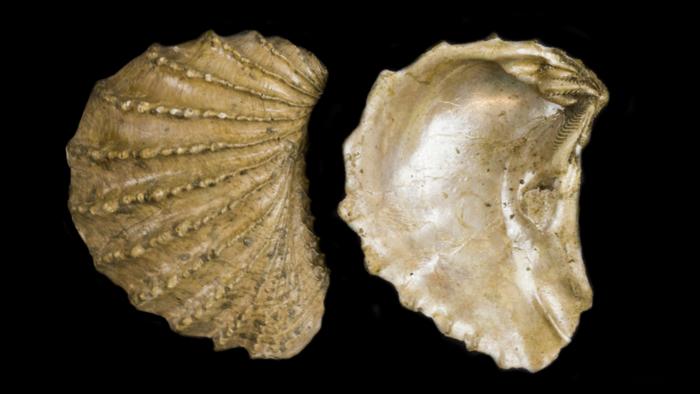In the shadow of Earth’s most catastrophic events, ecosystems face overwhelming challenges that threaten the very fabric of biodiversity. Among these, the end-Cretaceous mass extinction event, which occurred approximately 66 million years ago, stands as a seminal catastrophe that eradicated an estimated 75% of all species on the planet, including the iconic non-avian dinosaurs. Yet, a new study led by researchers from the University of Chicago, the Smithsonian Institution, and the Natural History Museum of London reveals an astonishing resilience in marine ecosystems following this extinction, challenging long-held notions about how life rebounds after mass die-offs.
This landmark investigation centered on fossilized marine bivalves—clams, oysters, cockles, and their kin—organisms renowned for their durable shells that fossilize well, providing a robust window into past marine environments. By compiling an extensive database of these fossils, the team meticulously reconstructed the ecological niches occupied prior to and immediately after the mass extinction. Importantly, their analysis extended beyond mere species counts to examine the diverse “functional diversity” of these organisms—the various ways in which different species made their living within their respective ecosystems.
A striking revelation emerged: while the sheer number of species plummeted drastically, the range of ecological roles they filled remained remarkably intact. In other words, despite losing three-quarters of species, virtually every ecological niche was still represented. This outcome flies in the face of statistical expectation. According to co-author Katie Collins, such an even retention of ecological functions is “extremely statistically unlikely.” Given that some niches were supported by just a few species before the extinction, theory dictates that such specialized modes of life should have vanished entirely with the decimation. Instead, the ecological framework proved surprisingly stable amidst biological chaos.
This discovery unsettles the two prevailing hypotheses explaining post-extinction recovery. One suggests that mass extinctions merely accelerate inevitable evolutionary trends—mammals overtaking dinosaurs, for example—while the other posits that the survivors redefine the biological landscape by invading newly vacated niches. Rather than echoing either model, the recovery pattern in Cretaceous marine life paints a more complex picture. David Jablonski, a leading geophysical sciences professor at UChicago and an author on the study, describes the finding as “a bit of a wakeup call,” highlighting gaps in our understanding of functional group loss relative to species extinction.
Delving deeper, the researchers uncovered another surprise in how surviving species fared post-extinction. Contrary to the expectation that survivors would dominate and diversify to reestablish stable ecosystems quickly, the distribution of species success was dramatically scrambled. Edie, a paleobiologist with the Smithsonian, notes that a genus abundant in survivors immediately after the extinction didn’t necessarily maintain dominance or even thrive in subsequent epochs. This dynamic upheaval decouples survivorship from long-term ecological influence and complicates predictive models about ecosystem recovery.
The team’s findings also call into question assumptions about ecological opportunity following mass extinctions. The traditional view holds that when extinctions flatten the playing field, surviving organisms rapidly exploit new niches, leading to bursts of radiation and ecosystem reconfiguration. Although this might apply to terrestrial mammals post-Cretaceous, the marine realm apparently followed an alternative trajectory. The persistence of functional niches amid dramatic species turnover suggests that the ocean’s ecological architecture proved remarkably robust, resisting rapid wholesale changes during this tumultuous interval.
These insights carry profound implications for contemporary conservation biology. Modern oceans are under siege from myriad anthropogenic pressures including acidification, pollution, and overexploitation. Understanding how marine ecosystems historically responded to sudden, massive perturbations can inform strategies to preserve functional diversity, which underpins ecosystem resilience and productivity. Jablonski emphasizes that conservation efforts must consider the broader ecological matrix rather than focusing solely on individual species, as the integrity of ecological roles may be key to sustaining ocean health amid ongoing environmental change.
Moreover, the persistence of ecological functions despite catastrophic losses raises questions about the redundancy and adaptability embedded within marine biodiversity. Are certain ecological strategies more resilient to extinction events? And what mechanisms enable the reshuffling of survivors to maintain ecosystem functions even when species identities shift? Such questions could guide future paleoecological and conservation research, bridging paleontological insights with urgent modern challenges.
Technically, the study leveraged statistical modeling and data synthesis to reconstruct the assembly and reassembly of marine biotas across the K-Pg boundary. By classifying species not just taxonomically but functionally, the researchers quantified changes in modes of life, such as feeding strategies, substrate preferences, and mobility. This approach allowed them to discern subtler ecological patterns invisible in species counts alone, offering a multidimensional understanding of extinction and recovery dynamics in ancient oceans.
Importantly, the research underscores the nonlinearity and unpredictability characterizing ecosystem responses to mass mortality. The “scrambling” effect observed—where initial survival success does not guarantee long-term dominance—invites reconsideration of how evolutionary and ecological forces interplay after crises. It suggests that chance, environmental variability, and possibly interspecies interactions collectively sculpt the post-extinction trajectory, defying simplistic evolutionary narratives.
In sum, this study not only enriches our comprehension of one of Earth’s most dramatic extinction events but also serves as a critical reminder of the complexity underlying biodiversity loss and ecosystem recovery. As humanity confronts accelerating environmental upheavals, lessons from deep time offer both caution and hope. The resilience encoded in marine functional diversity signals potential pathways for recovery, provided we anchor conservation efforts in an ecologically holistic framework that respects the intricate tapestry of life’s modes of existence.
Subject of Research: Marine ecosystems’ recovery and functional diversity following the end-Cretaceous mass extinction event.
Article Title: The end-Cretaceous mass extinction restructured functional diversity but failed to configure the modern marine biota
News Publication Date: 21-May-2025
Web References: https://www.science.org/doi/10.1126/sciadv.adv1171
References: Edie, Collins, and Jablonski, Science Advances, May 21, 2025.
Image Credits: Image courtesy Smithsonian National Museum of Natural History
Keywords: Evolution, Paleontology, Bivalves, Mass extinctions




